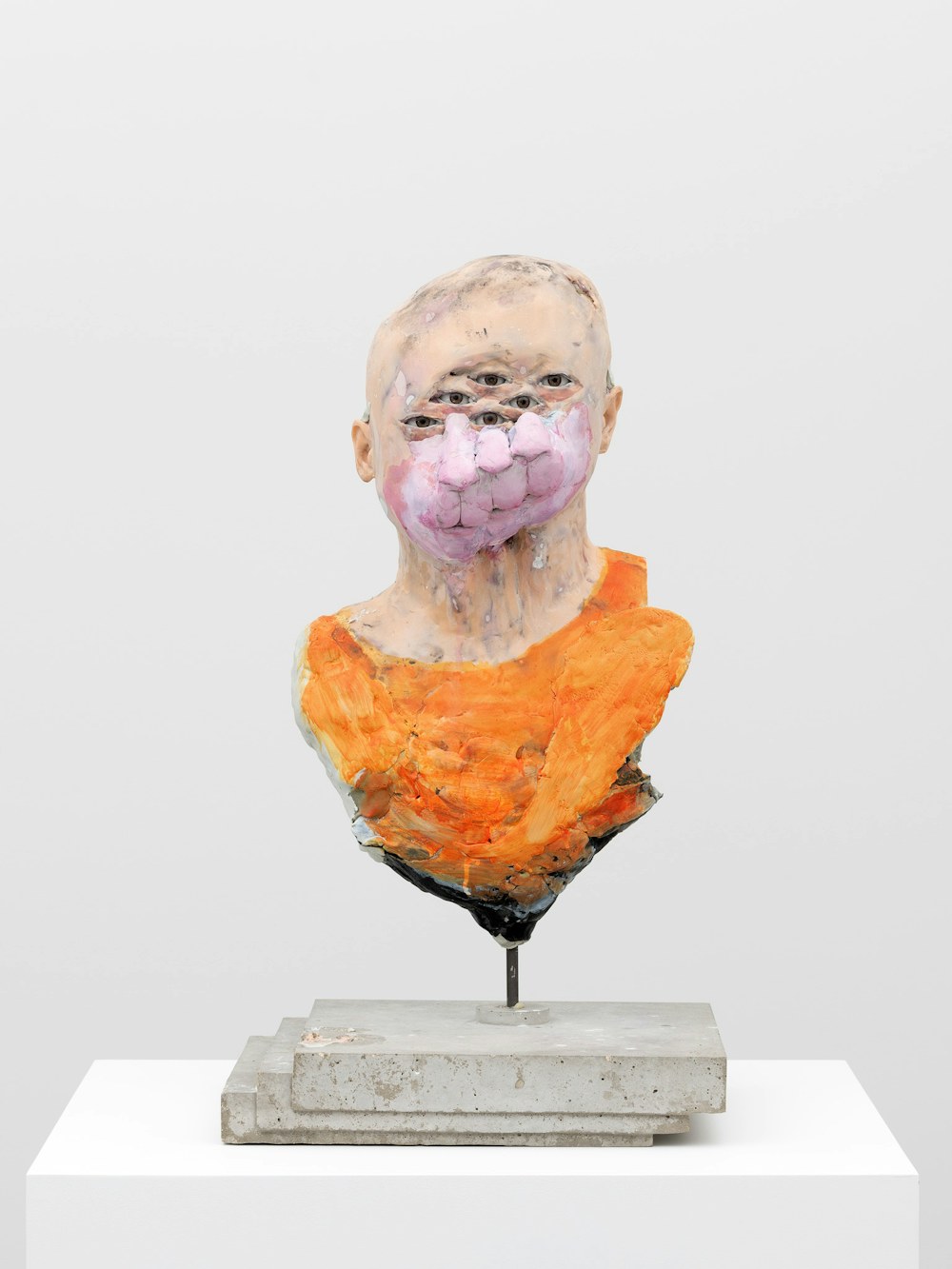
Immediate Response
When I first saw Joy by David Altmejd, I felt confused due to the disorienting composition. My next immediate thought was that the subject looks a bit like Thom Yorke from Radiohead, at least in the eye area. I keep getting drawn to his eyes, but the nature of the piece causes my own to dart around to all three sets. It feels impossible to really get a look at his face. I was also caught by the bunny nose. It feels a bit silly and makes me smile, but my dominant reactions are confusion and curiosity. I just want to know what is making this guy so happy.
Objective Description
On top of three layered, offset concrete platforms sits a thin, short pole with a large bust on top. The bust is colored bright orange in the clavicle area, and the neck and head are a light pinkish beige skin color. The mouth and nose are a light bubblegum pink, and look to be shaped like the snout of a bunny. The subject’s facial features are duplicated and copied at a 45 degree angle up and to the right so that the face is arranged in a diagonal–with 6 eyes, 3 noses, and 3 mouths in total–similar to the concrete layers at the base. The subject appears to be smiling.
Technical Decisions
The piece sits on a thin pole, so Altmejd probably had to do some finessing to make sure the bust was well balanced. It looks to be made out of concrete and possibly stone with some clay overtop. The clay was then painted over with particular colors to give it its “lifelike” appearance. The glass eyes inlaid also contribute to this goal. Even appearing human, it feels a bit uncanny. The haphazard way the clay was added on makes the figure appear damaged or worn more like a mannequin would be than a human. The illusion aspect blurs the features and dampens my understanding of the piece, but the representation of a man with a bunny nose is not lost. Altmejd could be testing the boundaries of abstraction through his presentation and material choices. All aspects suggest a transformation. His work captures this movement in one moment of time.
The Work in the World
The work is similar to classic busts that one might see of presidents or important historical figures. But while busts are normally seen as stately and solidly represented figures, Altmejd’s bust is far from that. It sits on the edge of absurdity with its repeating features and animal aspects. It is completely modernized, through shape and color. The bright orange is specifically alternative and eye-catching, but it still feels familiar and loose, most referential to the orange robe worn by monks. Even though the subject appears worn down, it still feels like Altmejd’s bust is honoring. If not honoring the man, it honors a concept.
The Story it Tells
Altmejd’s hand moves towards paradox as he builds a deconstructed bust of a monk-like figure. While appearing worn, the subject is not being destroyed, he is being reformed. The transformation from man to bunny represents ascension, but defies traditional ideas of this concept. While the subject’s calm smile is an important indicator that he is at peace, the central indicator of this ascension (other than the orange robe) is that when the eyes are duplicated and layered in an offset way, all pairs of eyes are given a third eye in the middle. The concept of a third eye suggests the subject is wise beyond human comprehension, hence, why it is no longer only man. Altmejd’s work represents a state of transitional being: existing and not, being old and new, and being human and non-human all at once.